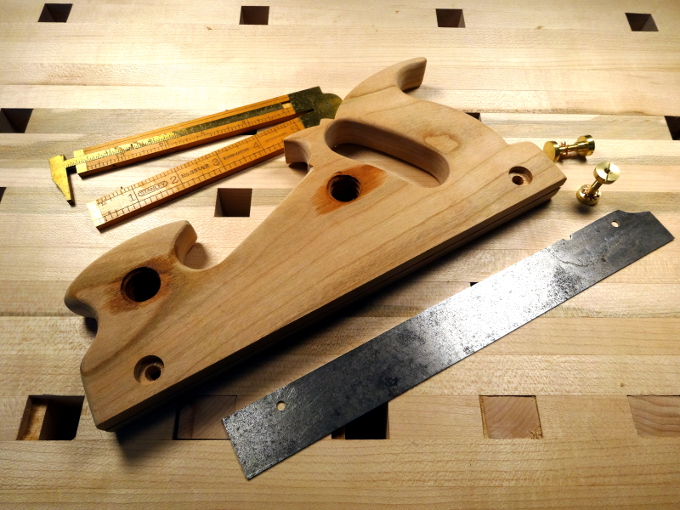Resawing lumber is a part of many projects, from big long boards for the hulls of boats, to fine hardwood boards for boxes. It’s time to take resawing accuracy to the next stage. I follow the usual technique of sawing from all 4 corners and flipping frequently to stay on track, or for a very long board, still flipping frequently side to side. Even so, going astray a little bit and recovering often produces the dreaded “X” in the middle of a board. That’s sometimes a hump, with matching divot in the other piece. I’ve never had an error of that sort serious enough to ruin a project, but I would like to spend less time “cleaning up.”
No, don’t blame it on my saws. They are terrific and I keep them wicked sharp. It’s the guy pushing the saw.
Tom Fidgen published his solution, a “kerfing plane,” on his blog and in his recent book Unplugged Workshop. The idea is to produce a kerf of reasonable depth on all edges of a piece of lumber, and then use that kerf to guide the saw. We’ll see if it makes a difference.
Tom started with a fixed fence version and converted to an adjustable fence version. I’m going straight to the adjustable version. Here’s a start at the main body, in cherry. The “stains” near the upper holes are from linseed oil used to lubricate a tap for threaded holes (more on that later). The blade, needing teeth, is from an old Disston. The saw nuts are from Issac Smith’s Blackburn Tools.

Hi Bob,
Thanks for sharing your build. I’m going to follow your example.
What size diameter saw nuts did you go with?
Regards, Brad
Hi Brad,
The saw nuts are 1/2″. I don’t think it matters much.
Enjoy the build.